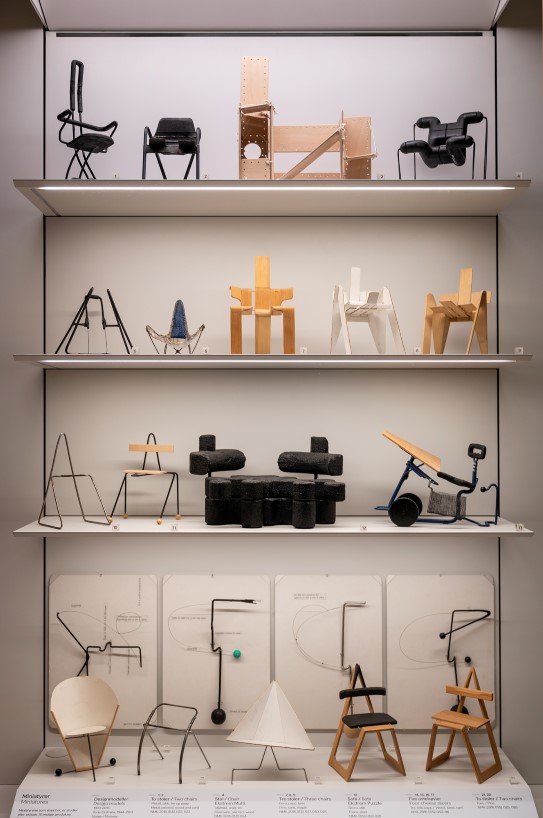From product to service

Transcription
Narrator:
Have you ever thought about what goes into making an audioguide like the one you’re listening to right now? About the team of experts in different disciplines who work together in a process we call service design? Their aim is to create a user experience that actually causes you not to think about what you’re doing or the service you’re using. The designer Oscar Narud tells us about the installation you see in this room.
Oscar Narud:
This installation is our physical interpretation of service design – everything that’s involved in the process of interdisciplinary cooperation amongst people who work in different fields. That’s why the title we’ve chosen is Orchestrated Experience, which is a term that’s used a lot within service design.
Narrator:
This installation was created by Oscar in collaboration with his business partner, the designer Amy Hunting. It illustrates the concept of service design by looking at three examples, one of which is the online food retailer Oda.
Oscar:
One thing that we see in Kjersti Johanne Barli’s illustration is that this virtual shop is intended to feel like a real-life shop: you go in, you have to pick up a shopping basket, you have to go through the various departments, you can get help along the way if you need it, and you have to go to the checkout and use a payment terminal. All of these features have been incorporated by service designers in order to make the experience feel as familiar and natural as possible for us users.
Narrator:
It takes more than simply one designer to put together such an apparently straightforward service: psychologists, marketing experts and web experts also provide their input. This way of working, which starts at the initial concept phase, is quite different from the approach that was usual in the nineteen-seventies and eighties.
Oscar:
We’re sharing this space with Terje Ekstrøm, who was hugely concerned about functionality – for example, what a chair would feel when you sat in it. But the way he worked was very much a hermit-like existence. He would sit alone in his studio and work on models and drawings. He wouldn’t have had this kind of network of other people to work with in the way we develop ideas today.
Narrator:
Terje Ekstrøm’s product designs were centred on ergonomics and how our bodies move. On the other hand, service design interprets and facilitates a series of actions we perform through digital channels such as apps or websites. The work processes are different, but both product design and service design are about the user's behaviour and experience of the product.